Donald Kohn, senior fellow in Economic Studies at Brookings and a former Federal Reserve vice chair, discusses why Silicon Valley Bank failed, what regulators did before and after the bank’s collapse, and whether or not this event could signal additional global financial problems in the future.
- Listen to Dollar & Sense on Apple, Spotify, Google, or wherever you like to get podcasts.
- Learn about other Brookings podcasts from the Brookings Podcast Network.
- Sign up for the podcasts newsletter for occasional updates on featured episodes and new shows.
- Send feedback email to [email protected].
TRANSCRIPT
[music]
DOLLAR: Hi, I’m David Dollar, host of the Brookings trade podcast Dollar and Sense. Today we’re going to discuss the collapse of Silicon Valley Bank and the potential for a financial crisis. My guest is Don Kohn, senior fellow in economic studies at Brookings and a former vice chair of the Fed. So, welcome to the show, Don.
KOHN: Thank you, David. Great to be with you again.
DOLLAR: So, let’s start with what Silicon Valley Bank did wrong and how it went bankrupt so quickly.
KOHN: So, Silicon Valley Bank made a number of bad bets. Number one, it concentrated its business in one sector, the tech sector. And even within the tech sector, it concentrated on venture capital and the startups that venture capital was dealing with.
What that meant was that in the boom for the tech sector and startups that accompanied COVID, when we were all shut in and using our devices much more intensely, the tech sector accumulated a lot of cash. They deposited it in Silicon Valley Bank—many of the startups deposited in Silicon Valley Bank. So, Silicon Valley bank’s deposits grew very, very rapidly from this very concentrated source.
But then in 2022, as we began to return to more normal modes of operation, the tech sector was under pressure, wasn’t expanding quite so fast. They needed to use that cash, and the deposits that had built up in 2020 and 2021 started leaving Silicon Valley Bank. So, that was one error they made.
The second error was they invested a substantial amount of these deposits in long-term government bonds and mortgage-backed securities. They were getting rates on those securities that were higher than what they were paying on the deposits, which was essentially zero when interest rates were zero for so many years.
So, that was a way of making a lot of money very quickly—investing in longer term assets at higher rates than you were paying on the deposits, which were much lower when the Fed was keeping rates at zero.
And they didn’t. So, you’re in a risky position if things don’t turn out the way you think they’re going to. Interest rates begin to change. Relationships change. The bank has taken on a lot of risk—economists call that “maturity transformation.” And the bank did not manage that risk. They just bought into the extra profits they were making in the short term.
But then in 2022, when inflation remained high and the Fed was tightening monetary policy in order to bring inflation back to its 2% target, the interest rates on those bonds and notes—the longer term bonds that they held—the interest rates went up, the value of the bonds went down. And as deposits began to leave the bank and kept leaving the bank, the bank found that it had to sell those bonds at prices that were below the prices that were being carried on their books and below the prices they had paid for them initially. So, they took losses on the bonds they sold in order to meet deposit outflows.
And that meant that their solvency, whether they really had enough assets to meet the deposit outflows, began to be doubted. Confidence in the bank eroded rapidly. And this was an especial problem with Silicon Valley Bank because the deposits it took were uninsured. They were not guaranteed by the FDIC, like about 90% of their deposits were uninsured. So, those depositors were dependent on the bank being able to repay them. And when they lost confidence in the bank’s ability to repay them, they got their deposits out very, very rapidly. It caused a run on the bank. People tried to be the first out the door so they could get their money out.
They lost about a quarter of their deposits in one day, on a Thursday. And then on Friday morning, when the bank was opening up, trying to open up, the bank and the regulators realized they had even much larger withdrawals in line and they weren’t going to be able to meet those withdrawals. So, the FDIC shut the bank down on Friday morning.
DOLLAR: So, Don, that was extraordinarily clear, I really appreciate that, thanks. SVB would have been considered a mid-sized bank, I think it was the 19th largest bank in the country as it got into these problems. Prudential regulation for this kind of mid-size bank was loosened in, I think, 2018, if I understand correctly. So, was that a mistake, loosening the regulation? Did that actually play a role or is that just an unrelated issue?
KOHN: Well, it’s not unrelated, David, that’s for sure. You’re right, Congress passed a law in 2018 which told the authorities that they should tailor their regulations more clearly, more closely to the size of the bank being regulated. And in effect, reduce the regulatory burden on small- and medium-sized banks. It’s not clear what role that played in this mess that occurred here. For sure, the regulations were loosened on banks in in the size category. But remember, Silicon Valley Bank grew very rapidly. So, it had just recently, in early 2022, I think, crossed over into that size category.
There’s the other thing that happened is in implementing that law, the 2018 law, the Fed had some discretion about how to implement it and how to apply regulations on institutions that were below the very largest institutions, the globally systemic institutions. So, whether it was the law or the way the Fed applied the law, it’s not clear. That bit of deregulation probably played some role. And the Fed could tighten, et cetera, whether Congress would pass a new law I think is highly doubtful, but the Fed could move within the existing law to tighten those regulations.
I think the more important point perhaps to emphasize is to differentiate regulation, setting the rules from supervision, which is the bank regulatory authorities, the Federal Reserve in this case, and the California state authorities enforcing the rules and taking a deep look into each individual bank to see its risks and to make sure it’s safe and sound. So, the supervisors are charged with making sure banks are safe and sound, as well as adhering to the to the rules. So, that’s a broader mandate.
And it’s very, very clear that the supervisory process broke down. So, whether the supervisors saw the issues early enough—they saw the issues, we’ve read articles in newspapers saying they saw some issues 2019, 2020, 2021 in particular, and 2022. So, they saw some issues. Did they see them soon enough? And then importantly, having seen the problems, why didn’t they force the management to fix them?
So, the regulation issue is on the table for sure, but the supervision issue is even more upfront. And Jay Powell has tasked Michael Barr, the vice chairman for supervision at the Federal Reserve—this was a Federal Reserve-regulated institution—with looking at what went wrong and why it went wrong. And Vice Chair Barr is to deliver a report on this by May 1st.
DOLLAR: Just as a footnote, Don, I had a little interaction with Silicon Valley Bank more than ten years ago when I was in China, because they have a joint venture there. And I remember they were the 50th largest bank in the U.S. So, as these problems developed recently, I was surprised to see they were the 19th largest bank. I think that in itself is probably a bad sign that they grew so enormously quickly.
KOHN: That’s an important point, David. If a bank is going to grow extremely rapidly, it needs to make sure that its risk management is very robust to the new kinds of risks that it’s taking on as it grows rapidly. And in this case, Silicon Valley Bank was taking on interest rate risk as it grew very rapidly and it wasn’t managing that risk. And in fact, for about nine months it didn’t even have a chief risk officer.
DOLLAR: Wow! So, Don, let’s talk a little bit about the response to the crisis as it developed. So, how do you see the Fed response, Treasury, FDIC? Did they do the right thing and they’ve essentially insured all the deposits of that bank, even though many of them were above the $250,000 limit. So, you know, have they handled this well?
KOHN: Yes, I think they have once the problems began. So, the previous discussion was maybe they didn’t handle it well when the problems were building up. I’m sure they didn’t handle it well when the problems were building up. But once the problems began, I think on that Friday after Silicon Valley Bank was closed in the morning, which is highly unusual—usually the authorities like to wait for the end of the day Friday, invite bidders in over the weekend, then open the doors on Monday morning for business as usual. That would reassure all the customers of the bank. But instead, they closed it down Friday morning. And we can all remember all the headlines and the news casts about what was happening at Silicon Valley bank.
As Friday went on, Thursday and Friday went on, I think the regulators—the authorities, the FDIC, the Fed, and the Treasury—became aware that Silicon Valley Bank wasn’t alone. There was a run on uninsured deposits spreading to other mid-sized regional banks. We do know one of them, Signature Bank in New York actually failed over the weekend, and another one, First Republic Bank in San Francisco, has had several efforts by the private sector to bolster it. But it’s been under a lot of a lot of stress.
So, there was a generalized loss in confidence by uninsured depositors across a range of regional banks. And I suspect that the regulators, the authorities, knew that that range of banks extended well beyond these few specialized banks, and it was becoming more general. So, they needed to reassure the public that they could be confident that if they had uninsured deposits in this broader range of banks, that they would be covered, they didn’t have to run the banks. So, to send a signal to these uninsured depositors they, as you noted, they said all the uninsured deposits at Silicon Valley Bank and at Signature Bank in New York would be covered. No one would lose money. So, that was a way of reassuring uninsured depositors in other banks that the authorities recognize that there was contagion going on, the system was under pressure and they were they were going to protect them.
The other thing the Fed did was set up a special discount window, a special lending facility for banks that might be experiencing a departure, run on uninsured deposits. And this discount facility enabled them to take the securities they held—some of which might be long term securities that had lost value—take them to the Federal Reserve, borrow against them to meet the flight of uninsured depositors.
The idea here was by opening this facility and telling the world that this facility was there, the Fed was prepared to supply the liquidity to the banks that had nervous, uninsured depositors, those uninsured depositors would become more confident that they would get their money out and they wouldn’t have to try to be first in line. They wouldn’t run the thing.
So, these two things seem to have stabilized the situation. We don’t really know. I mean, it’s very early days. The authorities have not issued a blanket guarantee, but they strongly hinted that if other banks were to fail on a bank-by-bank basis, they would make good on these uninsured depositors, at least for now.
DOLLAR: Do you think we should formalize this and ensure all deposits? And then presumably we’d have to increase the fees that the FDIC charges the banks?
KOHN: Well, I think this is an open question. You know, you could argue people are arguing, that implicitly we’ve already done this. So, not only is the issue the fees that the FDIC would have to charge, but the moral hazard created by this. By moral hazard—this is an aspect of insurance—if you insure people against a bad event, they’re not as careful to avoid that bad event. So, that if there were no ceiling on the FDIC insurance across all deposits, I think that’s another argument for both regulation and supervision being tightened so that the banks who are no longer at risk of losing the uninsured deposits wouldn’t have the incentive to take even extra risk since they would never be subject to a run.
I think this is an open question. It would be a big step to completely lift the ceiling on the insurance. I, quite frankly, haven’t made up my mind about this. There are pros and cons.
I think one interesting question is when the ceiling was lifted on insured deposits in 2008, it was lifted on transactions deposits, not every deposit. And we haven’t really seen a discussion of if you do lift the ceiling, what should it be lifted on? Should it be lifted for deposits of both households and businesses? There are a lot of a lot of issues here.
It would be nice to think that uninsured depositors could exert some market discipline on these banks. We saw in Silicon Valley bankers they didn’t. And the uninsured depositors fell down on the job and the supervisors fell down on the job. So, I think how quite to structure a change in the deposit insurance limit is a big question.
DOLLAR: Don, you’ve already hinted that there’s a lot of uncertainty going forward. So, let’s talk a little bit about scenarios. Are we likely to see a lot more banks develop these kind of problems? Could this turn into a full blown financial crisis? And even if it’s not a full blown financial crisis, is it likely to lead to, in some sense, a credit contraction? Does it substitute for some of the interest rate increases that the Fed has been considering?
KOHN: I think the steps that the authorities have taken and have promised to take in the future have, in all likelihood, prevented a full blown crisis. Having lived through a couple of full blown crises, I’m very aware that you should never say “never.” You don’t know what’s happening underneath and what could boil over here.
But I think the more likely outcome is the sort of thing you were hinting at, David, kind of a slow bleed of deposits from these regional banks to larger banks that are more diversified and have more services and have higher capital ratios, look safer. And this slow bleed of deposits will put pressure on the regional banks and pressure on their credit, the credit. So, they’ll have to be very careful. They’ll want to stay liquid and not make a lot of loans that can’t be called quickly. So, they need to have a lot of liquid assets just in case there’s a run on their deposits. And they’ll need to be very careful about the risks that they’re taking so that their solvency isn’t called into question sometime in the future.
Moreover, an interesting aspect of this run on Silicon Valley Bank was how quickly it happened and the role of the internet and social media. So, these venture capital firms kind of put out the word to the startups that held a lot of the deposits, Get those deposits out of Silicon Valley bank. And in that in an era in which you can do that on your phone, the deposits left very, very quickly.
So, I think one learning for the regulators and supervisors is in a digital age, deposits may be quicker to leave the system. And I think what that implies for the banks is they’re going to have to pay up to keep the deposits. So, I think part of the slow bleed here would be more costs for the regional banks having to raise the rates they pay on deposits more quickly, that will squeeze their profits. And additional regulation, as we talked about.
So, we have a lot of things coming to bear on these mid-sized banks. And I think that will make them very cautious about lending. They’ll want to hoard their liquidity and so they’ll tighten the terms and standards that they have for making loans.
We don’t know how much. A process like this was already in train in the second half of last year. The Fed has a survey of terms and conditions of bank lending. They survey lending officers. In the second half of last year, lending officers were already tightening up on their credit to businesses and households because they were concerned about facing a recession in 2023 as the Fed was fighting inflation. So, they were being extra careful. And I think that’s going to be amplified in 2023 as by these extra pressures on those regional banks. So, credit will tighten across a broad range of banks here and tightening even more quickly than it was tightening last year.
DOLLAR: So, as this was playing out, the Fed had one of their regularly scheduled meetings and they raised their benchmark, their policy interest rate, by 25 basis points. I think before the SVB crisis, the markets had anticipated 50 basis points. So, they moderated that, but there were some voices calling for them to pause. How do you assess that Fed decision and has this little financial crisis—small so far—has it changed our expectations about inflation and interest rates going forward?
KOHN: Yes. So, I thought they did the right thing with their increase of 25 basis points and their target federal funds rate. What we’ve learned since the last time they met in January and the time before that in December when they put out their last set of projections, was that the U.S. economy in the first part of 2023 has been quite resilient. Consumers in particular have increased their spending. The economy appears to be growing faster than most people thought it would. Employment is rising very rapidly, still rising very rapidly, and labor markets still very tight.
One effect of that was inflation, although it came down on the headline—that includes food and energy prices because energy prices had come down for a couple of months—but core inflation, the stuff that doesn’t respond so quickly as food and energy prices do had not really come off and was way too high, was in the 4 to 5 range, depending on which measure you looked at.
So, core inflation, which the Fed pays a lot of attention to because it tends to predict future inflation, wasn’t coming down the way they were anticipating it would come down. The economy wasn’t weakening, inflation wasn’t coming down. They needed to tighten.
Before the banking situation developed, as you said, they probably would have tightened 50 basis points. But I think an important point, and one that Jay Powell stressed in his press conference, is that the tightening of credit conditions that we talked about just a few minutes ago will substitute for some increase in the federal funds rate. So, as credit conditions tighten, households and businesses find it more difficult to borrow, that will affect their spending to some extent. No one knows how much. Right? So, the Fed raised rates—not as much as it might have had to without … And going forward, they’ll have to gauge very carefully just how much restraining effect they’re getting from credit conditions versus the restraining effect they need to exert from their policy interest rates.
DOLLAR: Last question for you, Don, is how might this financial distress in the U.S. spill over to the global economy?
KOHN: Well, as you well know, David Dollar, U.S. and dollar financial markets are really the core markets for the global financial system. Lots of transactions are carried on in dollars, lots of borrowing and lending in dollars, even outside the U.S., even borrowing, lending in other currencies sometimes keyed to dollar interest rates. So, what happens in the U.S. doesn’t stay in the U.S. What happens here in our financial markets is critical for global financial markets.
Now, I think it’s important in that regard to distinguish this episode from the 2007, 2008, 2009 episode. In that episode in which problems in the U.S. just rocketed around the world very, very quickly and very, very pervasively, in that episode, a lot of foreign banks were holding bad U.S. loans. Remember the subprime mortgages that went bad? They were lodged abroad. So, those banks were in trouble because they were holding U.S. assets and that helped the contagion. We don’t have that problem. So, this isn’t about bad credit in the U.S., it’s about bad bets that some U.S. banks made.
And also in 2008, the whole global market shut down after Lehman failed. And we don’t have that Lehman moment, even though, as we discussed a few minutes ago, you can’t rule out this crisis deepening. We haven’t had that kind of moment of global failure of a global institution. In fact, a lot of the reforms since 2008 were to strengthen these global banks and investment banks. And I think they’ve been successful in doing that.
But still, problems in the U.S. cause investors and banks and depositors and banks overseas to take a harder look at the banks they’re dealing with. We saw Credit Suisse Bank in Switzerland, which had been troubled for a long, long time and by no means was related to the U.S. troubles, but their troubles seemed to intensify as the U.S. banking system was under pressure and they had to be forcibly merged with their rival UBS. There was some discussion of Deutsche Bank for a little while.
So, I think just having the U.S. markets on edge, you don’t know where that’s going to pop up globally. And partly to guard against how this might pop up globally, the Federal Reserve and its partner central banks in swap arrangements where the Fed sends dollars to the foreign central bank, the foreign central bank sends its currency—euros, pounds, Canadian dollars or whatever—to the U.S. It’s just a swap arrangement, but it’s a way of getting dollars into foreign central banks so that in the event of a problem, the foreign central banks have the dollars to support their banks when their banks have dollar obligations they have trouble meeting.
What the central banks did was they went to daily auctions for those swap arrangements. And while the take up in those auctions was very, very small, I think the symbolism that the bank, the central banks were aware that there might be a problem, they were prepared to meet that problem with the swaps on a daily basis, should have been helpful in calming some nerves abroad. But make no mistake about it, when the U.S. has problems, it spills over to the to the rest of the world.
DOLLAR: Yeah. It’s still the case that when the U.S. sneezes the rest of the world catches cold. So, I’m David Dollar, and I’ve been talking to my colleague Don Kohn, who is usually the ideal person to explain how this Silicon Valley bank problem developed into a mini financial crisis and how the financial regulators in the U.S. have done a good job so far containing this, but emphasizing that there’s quite a bit of uncertainty going forward. And it does have some effect on the global economy. And that’s why it’s a good topic for Dollar and Sense, the Brookings trade podcast.
So, thank you, Don.
KOHN: Good to be with you, David.
[music]
DOLLAR: Thank you all for listening. We release new episodes of Dollar and Sense every other week. So, if you haven’t already, follow us wherever you get your podcasts and stay tuned.
It’s made possible by support from producer Fred Dews, audio engineer Gastón Reboredo, and other Brookings colleagues. If you have questions about the show or episode suggestions, you can email us at Podcasts at Brookings dot edu. Dollar and Sense is part of the Brookings Podcast Network. Find more Brookings podcasts on our website, Brookings dot edu slash Podcasts.
Until next time, I’m David Dollar and this has been Dollar and Sense.
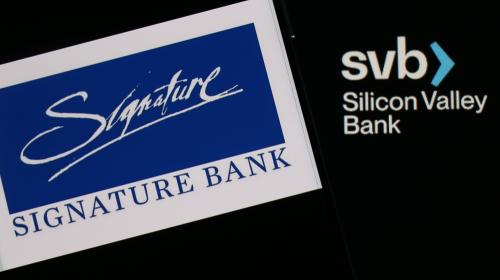
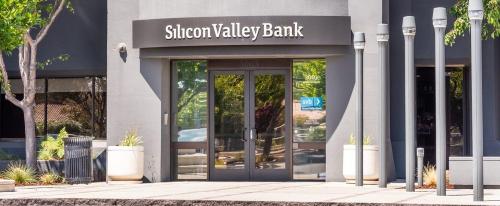
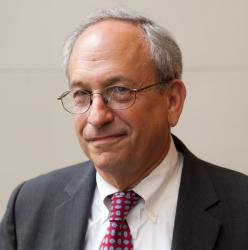

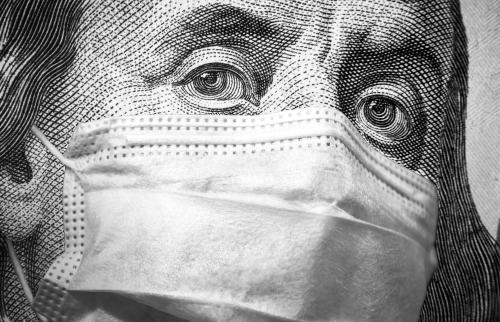

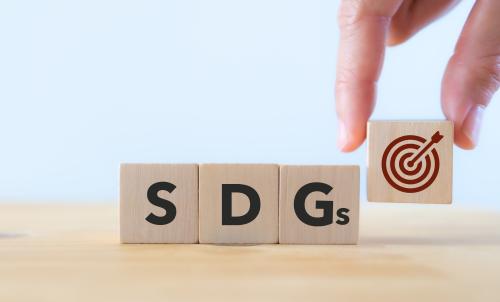
Commentary
PodcastWill Silicon Valley Bank’s collapse lead to a financial crisis?
April 4, 2023